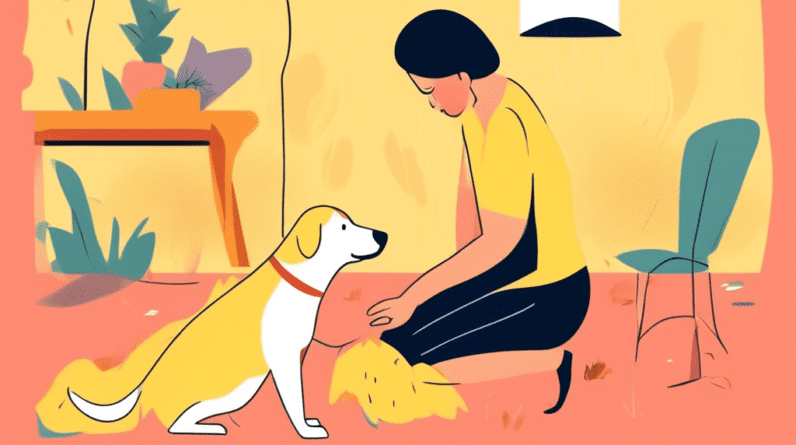
How Much Space Does a Labrador Need?
Labrador Retrievers, with their playful personalities and boundless energy, are one of the most popular dog breeds globally. Their friendly nature and intelligence make them fantastic family pets. However, before you welcome a Labrador into your home, it’s crucial to understand their spatial needs to ensure their happiness and well-being.
Understanding a Labrador’s Needs
While Labs are adaptable dogs, they thrive in environments that cater to their inherent needs. These needs are rooted in their breed history and natural instincts. Here’s a breakdown:
1. Exercise and Activity:
Originally bred as working dogs, Labradors possess significant energy reserves. They were bred to retrieve fishing nets, haul carts, and assist hunters for hours on end. This innate drive for activity hasn’t diminished in modern Labs. Consequently, they require ample opportunities to expend their energy.
2. Mental Stimulation:
Beyond physical exercise, Labradors are intelligent creatures who crave mental stimulation. A bored Labrador can quickly become a destructive Labrador. Engaging their minds with activities such as training, puzzle toys, and interactive games is crucial for a happy and well-adjusted pup.
3. Companionship:
Labradors are highly social animals who thrive on companionship. They form strong bonds with their human families and often experience separation anxiety when left alone for extended periods. Their social nature emphasizes the need for a home where they’ll receive ample attention and interaction.
Factors Influencing Space Requirements
The amount of space a Labrador needs isn’t solely determined by square footage. Several factors come into play:
1. Age:
A Labrador puppy’s spatial needs differ significantly from an adult’s. Puppies, while smaller, have bursts of energy and require constant supervision. Their smaller bladders also necessitate more frequent potty breaks, making a smaller, confined area within a larger home more manageable.
2. Energy Levels:
Labradors, like people, have individual personalities. Some are naturally more energetic, while others are content with moderate activity. Understanding your Labrador’s energy levels is crucial in determining the amount of space they need to expend their energy effectively.
3. Outdoor Access:
Access to a securely fenced yard significantly impacts a Labrador’s indoor spatial requirements. A spacious yard provides an outlet for running, playing fetch, and expending pent-up energy, reducing the pressure on indoor space. However, a yard doesn’t replace structured walks and playtime.
Minimum Space Recommendations
While no strict rules dictate the exact square footage for a Labrador, guidelines exist based on their needs:
Apartments:
Labradors can adapt to apartment living under the right conditions. A one-bedroom apartment may suffice for a single Labrador if the owner is committed to providing ample outdoor time. However, larger apartments with more living space are generally more suitable. The key is to ensure the Labrador receives sufficient exercise and mental stimulation outside the apartment.
Houses:
Houses with yards are generally ideal for Labradors. A securely fenced yard allows them the freedom to run and play without constant supervision. However, even with a yard, Labradors still need structured walks and playtime with their owners.
Creating a Labrador-Friendly Environment
Providing adequate space goes beyond mere square footage. It’s about creating an environment that caters to a Labrador’s physical and mental well-being:
1. Designated Spaces:
Create specific areas within your home for your Labrador, such as a comfy bed, a designated eating area, and a play zone. This provides them with a sense of security and belonging within your home.
2. Mental Enrichment:
Invest in puzzle toys, interactive feeders, and engage your Labrador in training sessions. These activities challenge their minds, prevent boredom, and curb destructive behaviors.
3. Outdoor Time:
Whether it’s a securely fenced yard, regular walks in the park, or trips to a dog park, ensure your Labrador receives ample outdoor time to explore, play, and socialize.
4. Social Interaction:
Labradors thrive on companionship. Make time for daily interactions, playtime, and cuddles. If you’re away for long hours, consider a dog walker or doggy daycare to prevent loneliness and boredom.
Conclusion:
Determining how much space a Labrador needs is a nuanced consideration that extends beyond simply measuring square footage. By understanding their innate needs, energy levels, and providing a stimulating environment enriched with physical activity and mental challenges, you can create a loving and fulfilling home for your Labrador companion, regardless of your living situation. Remember, a happy Labrador is an active Labrador, and a well-exercised Labrador is a well-behaved Labrador.






